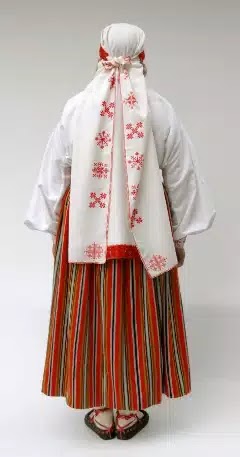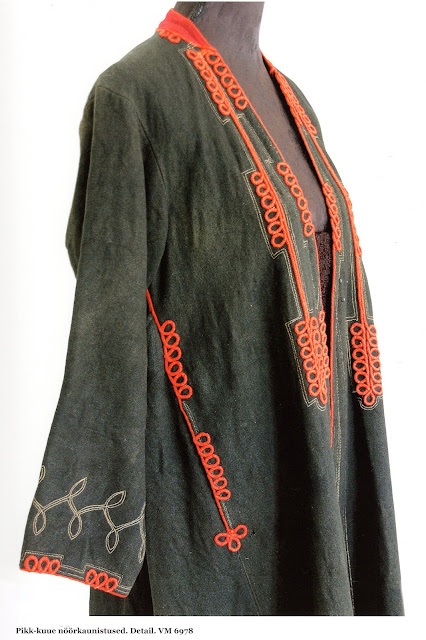Today I will continue my coverage of the traditional attire of Mulgimaa by covering the eastern parishes of Paistu, Tarvastu and Helme.
I covered some basic information about the Mulgi in my previous article.
The image above is from Paistu parish.
The chemise, särk, in this region, in contrast to West Mulgimaa, has basically the same cut as in Võrumaa. It is made from linen, has a narrow shoulder yoke, and sleeves set in at a right angle to the body. 
What appear to be older examples show white on white embroidery on the collar, epaulettes, and cuffs. The stitch used is what in Ukrainian is called верхоплут, verkhoplut, which translates as 'topwinder'. This stitch is found across Eastern Europe. I have not been able to find an Estonian or an English name for this stitch. Here are some examples from each of the three Parishes.
Paistu
Tarvastu
Helme
This stitch is somewhat similar to Marash work, in that ground stitches are laid parallel to each other, and then a second journey is made winding the thread around the previously laid stitches. Here is a schematic showing how to do this stitch from "The Art of Ukrainian Embroidery" by Olena Kulynych-Stakhura. A good explanation can also be found in "Ukrainian Embroidery Techniques" by Tania Diakiw O'Neill, pgs 47-49. I have also found mention online.
Here is an example of a chemise with satin stitch whitework from Paistu Parish. The cuff still has a border design in topwinder.
What I believe to be later examples of chemises are embroidered in red in topwinder, satin stitch or cross stitch, with ancillary stitches. Again, examples from the three parishes.
Paistu
Tarvastu
Helme
I have seen reconstructions where the seam is placed at the peak of the shoulder, this is incorrect, the seam should fall on the upper arm. Doing so makes the body of the chemise too narrow. I suspect that this is done simply because modern set in sleeves sit at this point, and the sewer does not know that it was done differently in the past.
This is wrong:
This is correct:
Over the chemise, a wrap skirt was originally worn, greatly resembling that of West Mulgimaa.
I have only found evidence of the dark wool wrap skirt in Eastern Mulgimaa, with just the braided edging, or with the bronze wire ornament. The red and white wrap skirts are not in evidence. The silver plate ornament likewise is lacking. These examples are from Paistu Parish.
A type of skirt seemingly found only in East Mulgimaa is the pallapuul. It is woven of linen in twill, and has a band of woven in ornament at the hem. The designs are similar to those woven into the sashes, but generally seem to have black on the edges and red in the center. This garment seems to have been especially common with unmarried girls, and would not have been worn in cold weather.
Paistu
Tarvastu
Later the skirts, seelik, were woven from wool in stripes or plaids, as in the rest of South Estonia.
Paistu
Tarvastu
Helme
The hip apron, puusapõll was worn here as well, especially with the wrap skirt or the linen skirt. This garment was white, and embroidered with typical Mulgi embroidery on the ends.
Paistu
Tarvastu
Helme
The apron, põll, was often white and embroidered. Some had old style Mulgi embroidery, based on circular and other free-hand motifs.
Paistu
Tarvastu
As this last example shows, cross stitch also came to be used on the aprons.
Later, refined embroidery, including openwork that was common on household linens also came to be used on the aprons.
Whereas in West Mulgiamaa married women put up their hair and tied a plain white linen rectangular piece of cloth over it, in East Mulgimaa they ornamented this cloth with embroidery. At first they just placed Mulgi style embroidery on the two shorter edges. The older päärätt.
White wool stockings were also worn here, as in West Mulgimaa, but here the knitted in design was much wider. In the past, women would also wrap footcloths around their legs to make their calves look thicker.
Moccasins of leather, pastlad, were worn over these. In dry snow, these might be replaced by footwear woven from birch or linden bark, viisud. Both were held on by laces wrapped around the legs. This type of footwear was very common in Eastern Europe.
Here is a well known photograph showing a man from Tarvastu wearing a long city style overcoat [note the collar, lapels and buttoned overlap] over the kasuka. Note that boots or leather shoes were worn by those who could afford them.
Men wore shirts similar in cut to the womens' chemises, but shorter. Shirts for special occasions might be embellished with hemstitching and simple embroidery.
Plain dark wool socks were worn, the pants being tucked into them, and the whole held in place with braided garters, as is the case for the women. Moccasins or birchbark shoes were worn by the poor, and boots by those [not many] who could afford them.

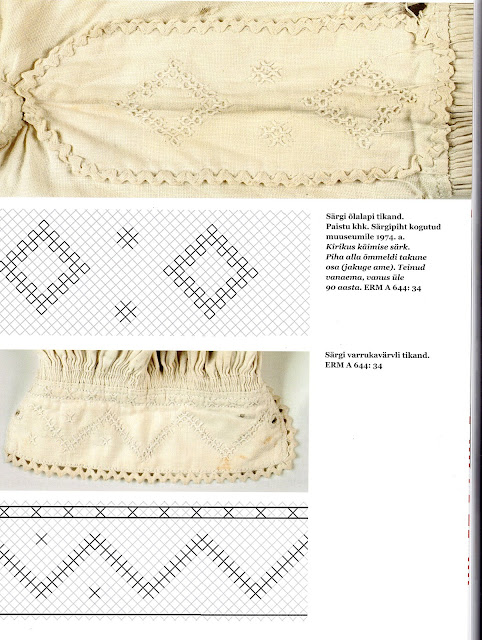



















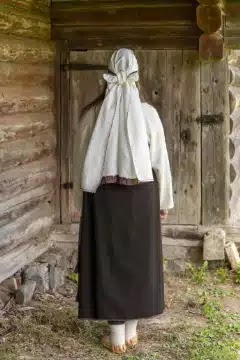


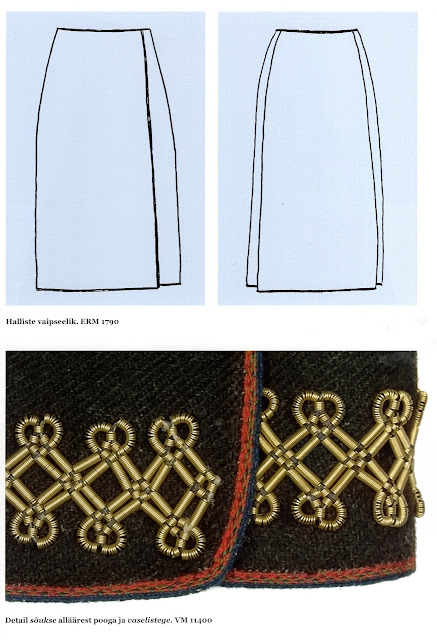








































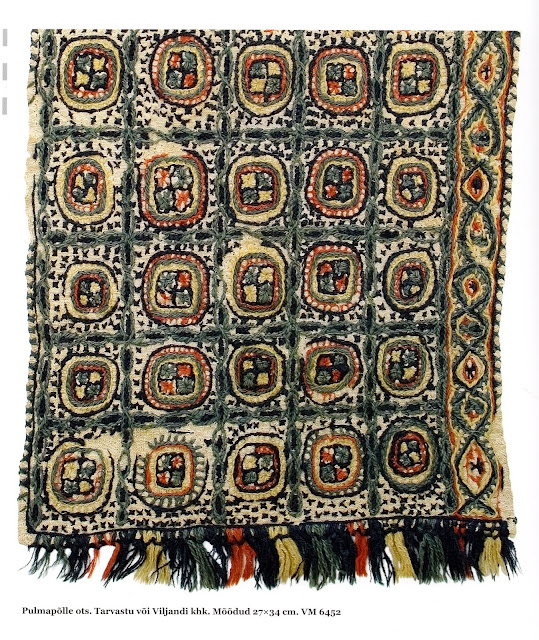




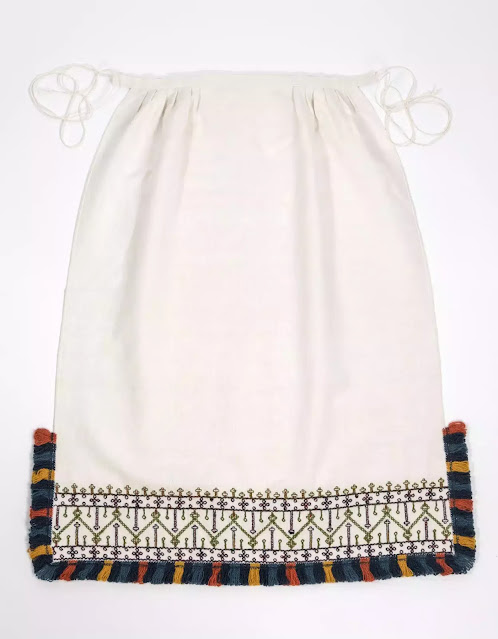



































.webp)

















.webp)
